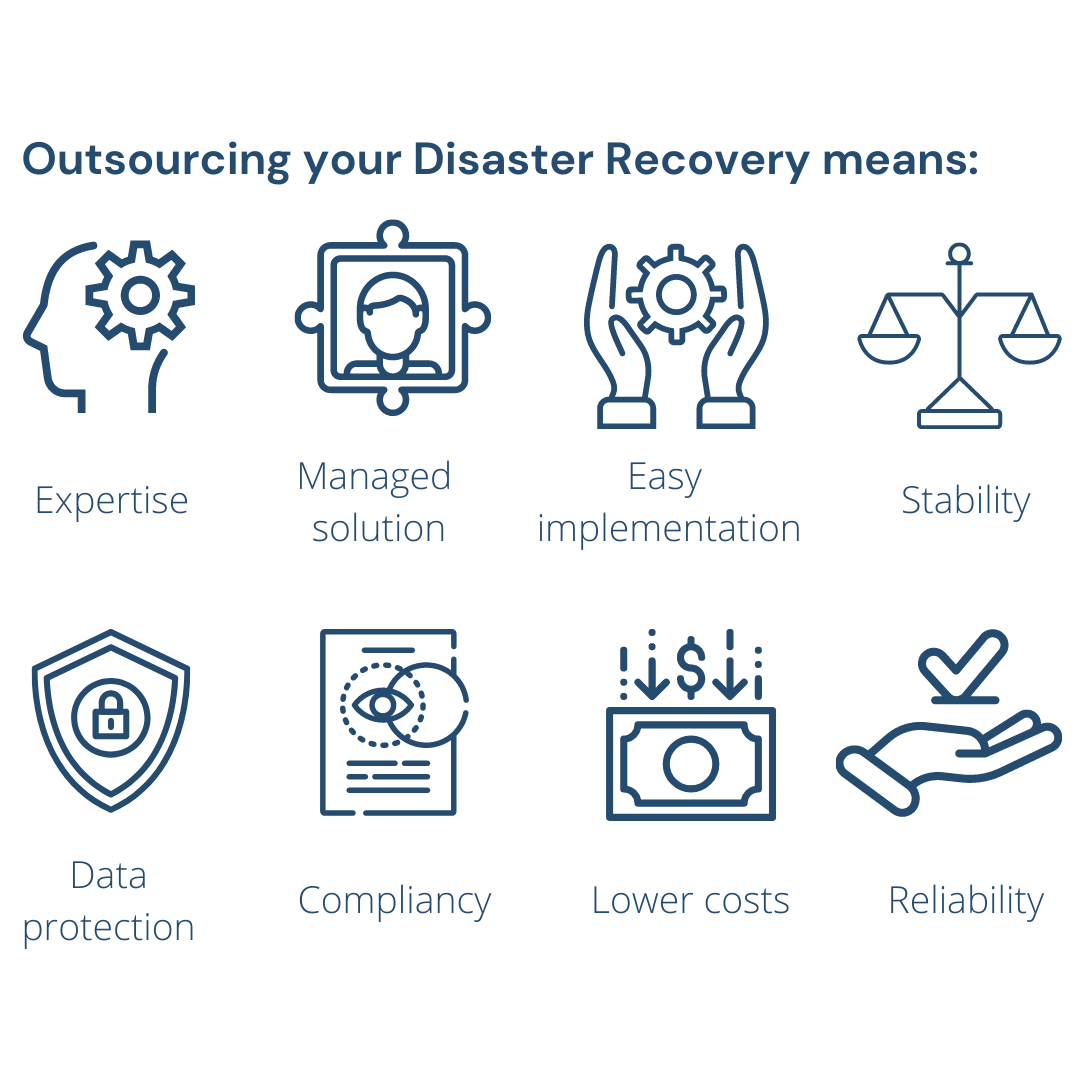Backup and Disaster Recovery in Cloud Computing
Cloud computing is the on-demand delivery of computing services that usually operates on a pay-per-use basis. Whether your solution provider delivers IaaS, PaaS or SaaS, cloud computing is designed to achieve different business requirements and more so services in the cloud can considerably improve data security and high availability of virtualized workloads.
Unlike traditional recovery in an on-premises situation, disaster recovery in the cloud can be more effective and economical. Disaster Recovery is an organization’s method of regaining access and functionality to its IT infrastructure after events like a natural disaster, cyberattack or business disruptions related to pandemics or other unplanned events.
A Disaster Recovery Plan, do I need it?
A Disaster Recovery plan enables businesses to maintain high service quality, regardless of the circumstances. Reducing the risk of downtime and data loss means your clients can rest assured they will receive adequate service even after disaster strikes. Business interruption is one of the consequences of not having a disaster recovery plan. You will not only lose revenue and important data but also employee productivity, in the case of any disaster however minor.
Disaster Recovery Outsourcing
Data is one of the most important assets in business, and in that respect, data protection has become a major priority. Outsourcing Backup and Disaster Recovery is a simpler and easier way to ensure a company’s data can be recovered and restored in the event of an incident.

A physical Disaster Recovery site, a dedicated facility for your IT infrastructure, including employees, sufficient server capacity, internet connectivity with sufficient bandwidth and network infrastructure (routers, switches, bridges), can often be too complex. Besides and in general companies with in-house IT departments, plan for their current IT requirements and as the business grows, new servers, storage devices, software and networks may be required.
Outsourcing your Disaster Recovery to quality service providers, having all the necessary data centers, resources and expertise in place would be an advantage.
When having your DR in the cloud, building and maintaining a secondary site will not be necessary. You can scale up or down by adding required cloud resources in an affordable pricing model. You will only have to pay for the actual use of computing services. A single point of failure will be avoided when having backed up data storage across multiple geographical locations.


